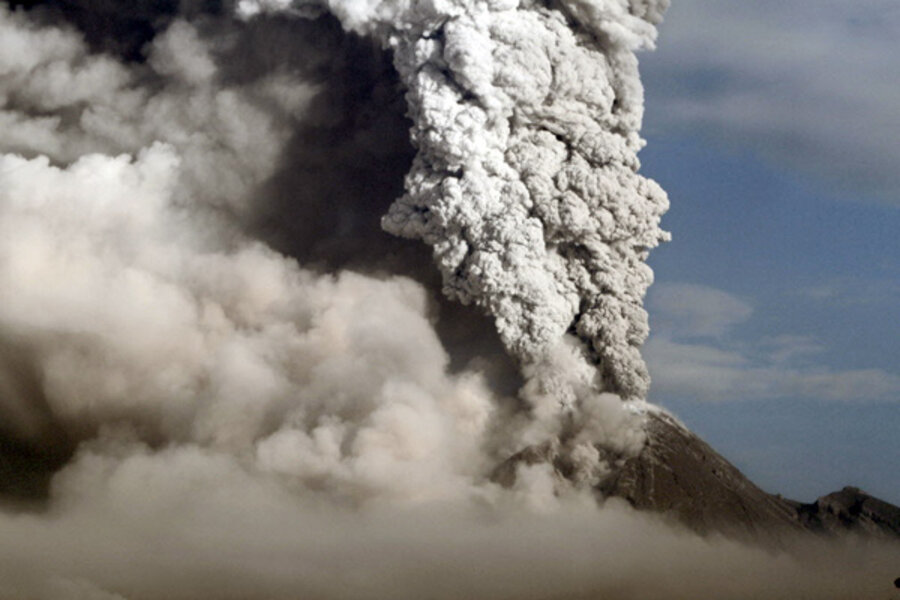Did Merapi volcano ash damage the Qantas A380 engine?
Loading...
One of the four engines on a Qantas A380 – the largest passenger jet in the sky – caught fire and had to be shut down shortly after takeoff from Singapore on a scheduled flight to Sydney, leading Qantas to ground its fleet of A380s until it gets to the bottom of what happened.
With Indonesia's Mt. Merapi volcano going through its most serious set of eruptions since the 19th century, it's natural to wonder if the ash it's pumping into Southeast Asia's skies contributed the Australian plane's engine trouble. For now, Indonesian officials say that's unlikely, and Qantas has refused to speculate on what happened to the Rolls-Royce engine until a full investigation is carried out.
Last April, an Iceland volcano erupted for weeks, disrupting air traffic across Europe and briefly leading to the shutdown of every airport in the UK, about 800 miles away.
RELATED: Qantas A380 engine emergency casts scrutiny on Airbus superjumbo jets
Today's incident appeared to happen over the Indonesian island of Batam, just south of Singapore, which is about 1,400 miles away from Merapi.
Indonesian television showed pieces of aircraft debris being held up by Batam residents and reported that it fell from the Airbus. Qantas said it appeared the cowling (a protective cover around the engine) had come off mid flight and passengers told reporters after the plane returned to Singapore that they hear a loud "bang" around that time.
No flights near Singapore have been effected by Merapi's eruption to this point, and a spokesman for Indonesia's transport ministry insisted that Merapi was unrelated to Qantas' problems.
"The shutdown of the Qantas engine had no connection with Mount Merapi," spokesman Bambang Ervan told the Canadian Press. "It was too far from the volcano — the sky over Singapore and Sumatra island is free of dust."
Indonesian geologists are now saying the Merapi eruption is its worst in more than 100 years, and that it's spewed ash as far as two miles into the air, which could pose a danger to more local aviation.
In 1983, the eruption of Indonesia's Mt. Galunggung volcano in West Java – much closer to Singapore – nearly caused two air disasters.
In June of that year, a British Airways jet's engines caught fire after flying into debris from that eruption, though the pilots managed to shut them down, glide out of the ash cloud, and restore power before they crashed. A Singapore Air flight experienced a similar problem in the same area a month later.
Those two incidents led to greater scrutiny of the dangers of volcanoes to air travel and industry reviews to tighten standards.





